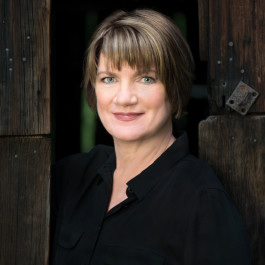
How investigative journalism tackled the NFL’s concussion problem
Today, most of us know that a professional football player can sustain potentially devastating brain injuries after years of repeated high-impact collisions with other players. That awareness is due in large part to the reporting of investigative journalist Jeanne Marie Laskas, whose 2009 GQ magazine article Game Brain profiled scientists who had made a stunning discovery: Concussions in pro football players could lead to dementia. It was a story the NFL didn’t want the public to know. But Laskas took on one of the most powerful corporations in the country to tell the story of those affected and further explored the issue in her 2015 book Concussion.
As part of the sixth annual National News Literacy Week, the News Literacy Project hosted an online discussion with Laskas, who detailed her reporting and noted the watchdog role that investigative journalists play in a democracy. (View the recording.)


“Journalists are kind of like translators of explaining complex ideas that the regular person at first blush is not going to get.”
🚨 The watchdog role of investigative journalism
Laskas’ reporting centered on Dr. Bennet Omalu, the physician who first discovered and published his findings on chronic traumatic encephalopathy (CTE) in football players. Although Omalu had published his research in scientific journals, the groundbreaking information about the brain damage suffered by professional football players was not reaching the public. A group of scientists hired by the NFL demanded retractions of Omalu’s work, she said.
Journalists like Laskas, who investigate and document abuses by individuals, corporations and government entities, serve as a check on the most powerful institutions. Their reporting ensures that the public has access to the information they need to make informed decisions. In this case, Laskas’ reporting helped bring to light important information that could affect the health, safety and well-being of the public.
As a result of the work of Laskas and other investigative journalists, the NFL has sought to change tackle styles to minimize head-to-head collision, and communities are embracing alternatives to tackle football, like flag football, for youth leagues.
“It’s becoming more and more important that we have a really robust journalist community of folks who are working hard to shed light on things that are getting darker.”
📰 The importance of local news outlets
Investigative reporting takes time and funding, emphasizing the need for credible, local news outlets. Local journalists are aware of the issues, concerns and dynamics of their communities. They have a unique vantage point to uncover corruption in local governments, school boards or businesses that directly affect residents. “We need people to be open to always taking the lid off and saying, ‘What’s really happening here?’” said Laskas.
“There’s stories everywhere that need light shone on them, and if you don’t have the resources and you don’t have the place to publish it, what are we going to do?”
🔍 Evidence at the source
Journalists like Laskas work hard to gather and confirm facts before publishing a news story. They rely on sources that are accurate and fair.
Before you decide to believe a claim, Laskas recommends thinking like a journalist and asking questions about the source’s motivation. Do they have a political or financial interest? Understanding a source’s purpose in distilling information allows consumers to think critically about its validity. Although skepticism is important, be careful to avoid falling into a trap of cynicism, or general distrust of all information.
“Often misinformation comes from someone who has a specific agenda.”


Want to invite a journalist to your classroom?
Through the News Literacy Project’s Newsroom to Classroom program, students learn real-world lessons straight from an expert. Educators can connect with over 150 volunteer journalists to schedule a virtual or in-person classroom visit.
To get started, sign up for a free Checkology® account. Register now to connect with a journalist.
